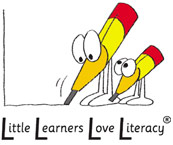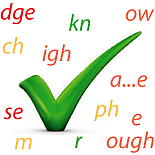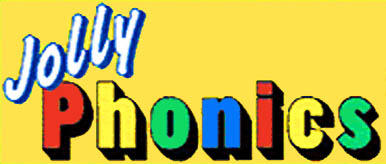Cued Articulation Application
Cued Articulation and Phonological Awareness
Phonological Awareness is the ‘conscious awareness of the sound structure of spoken words, e.g.syllable beats, rhymes, onset-rimes, individual sounds, etc.’1 It includes Phonemic Awareness – the ‘conscious awareness that spoken words are made up of individual speech sounds… it represents the pinnacle of phonological awareness development…’1
We now know that a child’s level of skill in this area is a reliable predictor of reading success and that a training program to develop these skills can lead to an improvement in a child’s reading and spelling. Cued Articulation works as a positive, visual aid to Phonological Awareness programs.
Cued Articulation and Literacy Schemes
Cued Articulation works well with many literacy schemes currently in use.
| Sound Waves –features the phonemic approach to the teaching of reading and spelling. It is a well-scaffolded program, which encourages children to note individual sounds in words, linking those sounds with the letters that spell them, and provides a consistent approach to spelling across the whole school. It acknowledges that individual sounds can be represented more than one way in written form. Using Cued Articulation reinforces students’ awareness of these sounds. www.fireflyeducation.com.au/soundwaves |
|
| Little Learners Love Literacy – the phonemic basis of this scheme provides great opportunities to make those sounds more explicit through the use of cues. It is developed from evidence-based research with activities to engage children's interest while teaching phonemic awareness and phonic skills to learn to read and write. www.littlelearnersloveliteracy.com.au |
 |
| THRASS –a phonetics teaching-tool which is based on the 44 sounds of English. Each of the 44 phoneme boxes shows the multiple spellings for each sound, and Cued Articulation provides a corresponding cue for each of the 44 phonemes. This approach reinforces the fact that each sound has multiple spellings. www.thrass.com.au |
|
| DIPL – this program’s focus on encouraging students to feel what our mouths do to produce the sounds means that early sound work is reinforced and heightened by use of cues. This early phonemic awareness work is combined with the understanding of how and why words, sentences and text types are structured. www.dipl.com.au |
 |
| Spelfabet –supports children with their spelling difficulties which, through using explicit, systematic synthetic phonics, teaches them to ‘hear’ the individual sounds in words and understand their main spelling patterns, giving them a solid foundation on which to build their fluency, vocabulary, comprehension and written expression. Cued Articulation enables students to ‘see’ as well as ‘hear’ the sounds. http://www.spelfabet.com.au/ |
 |
| Jolly Phonics –teaches literacy through synthetic phonics where the sounds are taught in a specific order. Cued
Articulation can be added to provide extra focus on the articulatory features of the sounds being taught. www.jollylearning.co.uk |
 |
Cued Articulation Application
Cued Articulation has been used with great success to support literacy teaching with average students. However, its benefit is particularly felt by professionals working with students with specific difficulties.
It is of particular benefit with:
- Specific speech and language difficulty
- Hearing impairment
- English as a second language (ESL) including indigenous students (for more information on using Cued Articulation with Aboriginal students, click here)